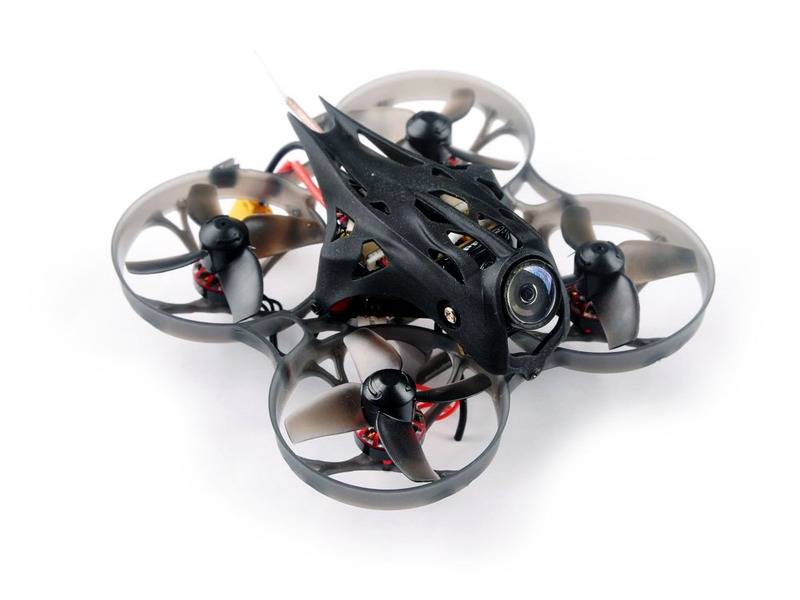What is the difference between a drone and a quadcopter?

The terms “drone” and “quadcopter” are often used interchangeably, but there are some key differences between them. A drone is a type of unmanned aerial vehicle (UAV) that is typically controlled remotely by a pilot or autonomously through the use of computer algorithms. Drones can be used for a variety of purposes, including surveillance, photography, mapping, and delivery.
A quadcopter, on the other hand, is a specific type of drone that is characterized by its four rotors. These rotors are arranged in an X-shape and are powered by electric motors. Quadcopters are typically used for aerial photography and videography, as well as recreational purposes such as racing and stunts.
The main difference between a drone and a quadcopter is in the number of rotors they have. Drones can have anywhere from two to eight rotors, while a quadcopter has four. The additional rotors on a drone provide more stability and control, allowing for more complex maneuvers. Quadcopters, however, are more maneuverable and can make sharper turns and more precise movements than drones.
Another key difference between drones and quadcopters is in their size and weight. Quadcopters are typically smaller and lighter than drones, making them easier to transport and store. This makes them well-suited for recreational activities, such as racing and stunts. Drones, on the other hand, are usually larger and heavier, making them better suited for commercial and military applications.
Finally, quadcopters are typically more affordable than drones. This is due to their smaller size and simpler design, which makes them easier to manufacture and maintain. Additionally, quadcopters are often easier to fly than drones, making them a great option for beginners.
In conclusion, there are several key differences between a drone and a quadcopter. Drones typically have more rotors than quadcopters, making them more stable and better suited for commercial and military applications. Quadcopters, on the other hand, are smaller and lighter, making them easier to transport and store, as well as more affordable. Additionally, quadcopters are often easier to fly than drones, making them a great option for beginners.
Comments / Question
1. Make sure you are aware of and comply with all applicable laws and regulations in the area where you will be operating the drone or quadcopter.
2. Do not fly the drone or quadcopter over people, buildings, or other restricted airspace.
3. Always keep the drone or quadcopter in sight and away from other aircraft.
4. Do not fly the drone or quadcopter in poor weather conditions, such as high winds, rain, snow, fog, etc.
5. Make sure the drone or quadcopter is properly charged and the battery is fully charged before operating.
6. Do not fly near power lines or other high-voltage electrical wires.
7. Always wear appropriate eye protection while operating the drone or quadcopter.
2. Search and Rescue: Drones and quadcopters can be used to locate missing persons or objects in difficult-to-reach areas.
3. Surveying and Mapping: Drones and quadcopters can be used to survey and map large areas quickly and accurately.
4. Delivery: Drones and quadcopters are being used to deliver goods and services to customers.
5. Agriculture: Drones and quadcopters can be used to monitor crops and livestock, as well as to apply fertilizers and pesticides.
6. Inspection: Drones and quadcopters can be used to inspect infrastructure such as bridges, power lines, and buildings.
7. Security: Drones and quadcopters can be used to monitor large areas for security purposes.
1. Longer Flight Time: Drones typically have a longer flight time than quadcopters, allowing for more aerial coverage.
2. Higher Payload Capacity: Drones are able to carry heavier payloads than quadcopters, making them ideal for commercial applications.
3. More Versatile: Drones are more versatile than quadcopters and can be used for a variety of tasks, such as surveillance, photography, and mapping.
Disadvantages of a Drone:
1. Cost: Drones are usually more expensive than quadcopters.
2. Complexity: Drones are more complex than quadcopters, making them harder to operate and maintain.
3. Limited Maneuverability: Drones are not as maneuverable as quadcopters, making them less suitable for close-quarters flying.

